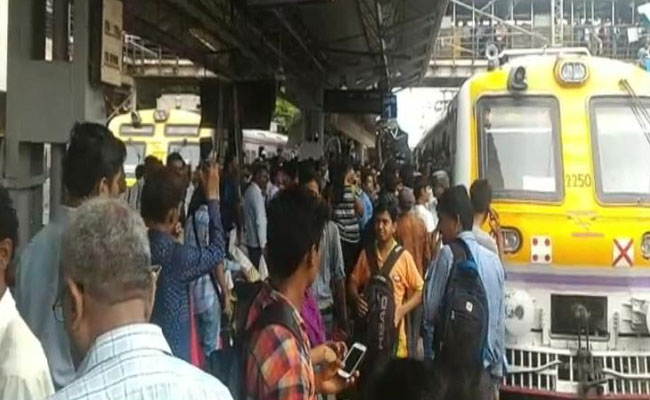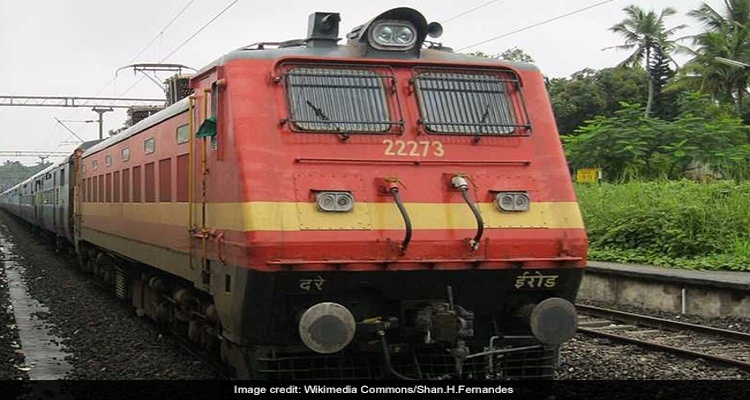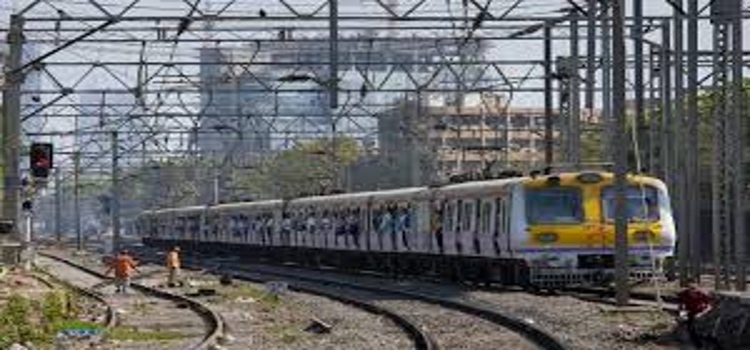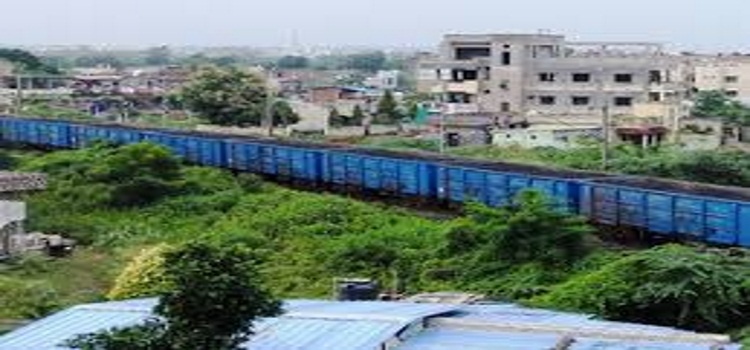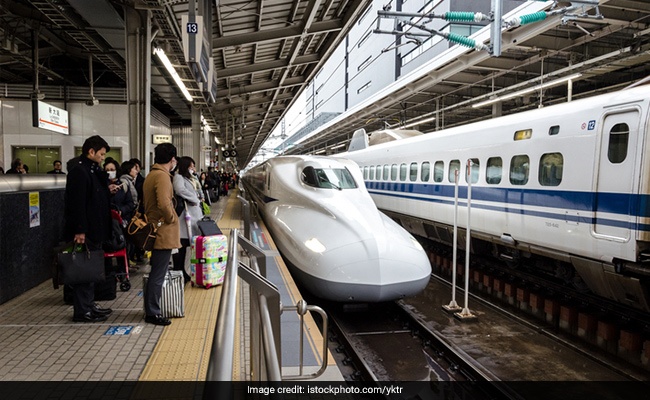NMDC Ltd is making expenditure of Rs 50.37 crore to enable facilities towards doubling of railway line between Kirandul and Jagdalpur and Jagdalpur and Ambagaon required for augmentation of iron ore evacuation capacity of Bailadila sector in Bastar region of Chhattisgarh.
The company is also making efforts to increase iron ore evacuation capacity through doubling of Kirandul-Kothavalasa (KK) railway line, officials informed.
Notably, the company is also participating in the Rowghat-Jagdalpur Rail line project as a major stake holder with 43 per cent share along with SAIL, IRCON & Govt. of Chhattisgarh being other stake holders with 21per cent, 26per cent & 10per cent respectively.
On the other hand, Chhattisgarh government would be earmarking suitable land banks in the vicinity of Dallirajahara-Rowghat-Jagdalpur Rail Corridor for setting up of small industrial units, officials informed.
Notably, the Steel Authority of India Ltd (SAIL) is co-ordinating the construction of Railay line from DaIlirajhara to Rowghat covering a distance of 95 km with Indian Railways in Chhattisgarh.
The project for doubling of Railway line between Kirandul and Jagdalpurin Chhatisgarh’s insurgency ridden Bastar region is expected to be complete by January 2019, official sources informed.
Notably, NMDC Ltd had also signed a Memorandum of Understanding with the Union Ministry of Railways on December 21, 2012 and the aforesaid project would be helpful in significantly augmenting evacuation capacity of NMDC’s Bailadila Sector mines by rail from the existing 28 MTPA to 40 MTPA of iron ore.
NMDC had deposited an amount of Rs 150 crores with East Coast Railway and the expenditure incurred as on March 31, 2015 was Rs 132.00 crore, sources informed.
For execution of the project, the Railways has divided the 150 km length of doubling work into three Sections namely, Jagdalpur to Silakjori 45.50 km, Kirandul to Gidam 52.23 km and Silakjori to Gidam 52.73 km.
Notably, the Rs 2000 crore Rowghat to Jagdalpur railway line would also pass through heavily insurgency infested Kondagaon and Narayanpur districts of Bastar division in Chhattisgarh, officials stated.
The project is a joint venture between Chhattisgarh government, NMDC, SAIL and IRCON.The initial stretch of the first phase of the ambitious 235-km-long Dallirajhara-Rowghat-Jagdalpur Railway line project in Bastar division of Chhattisgarh has been completed, officials stated.
In all, 17 km Rail track has been completed in the first phase and Chief Minister Raman Singh has expressed happiness over the achievement, they stated.
A successful trial run of a Railway diesel engine was also carried out earlier between Dallirajhara till Gudum village at the speed of 20 km per hour.
Notably, the development of two key Rail corridors in mineral-rich Chhattisgarh is now set to expand the Railway line network by 45 per cent in the State, officials stated.
The completion of Dallirajhara-Rowghat-Jagdalpur, East and East-WestRail corridor projects will comprise a total of 535 kilometers Railway-line during the next two to four years, they stated.
The East West Rail Corridor project is expected to get completed in 2018-19.
The corridor is to facilitate movement of about 60 million tonnes of coal to various parts of the country apart from providing passenger train facility for the local populace of the region.
The length of the rail track would be 135.30 kms.The Chhattisgarh East West Railway Ltd is the implementing agency for the project.
Notably, Coal India Ltd (CIL) is putting all its resources together to ensure its flagship subsidiary South Eastern Coalfields Ltd (SECL) is able to transport more coal easily to its customers, officials informed.
Notably, the East West Corridor project from Gevra to Pendra in Chhattisgarh with a length of about 122 kms is being executed by Chhattisgarh East West Rail Ltd (CEWRL) .
CEWRL is a joint venture company formed by South Eastern Coalfields Ltd (SECL), IRCON and Chhattisgarh government.
The project had been undertaken for evacuation of coal from SECL’s Gevra-Korba coalfields.
The Union Ministry of Coal has ensured Coal India Ltd (CIL) for getting Mand-Raigarh railway line project expedited to facilitate growth in offtake of coal from mines under South Eastern Coalfields Ltd (SECL) in Chhattisgarh.
Notably, the coal requirement for the proposed Super Thermal Plant of NTPC Ltd at Lara would be met from Talaipalli Coal Block of Mand in Raigarh Coalfields, officials stated.NMDC Ltd is making an expenditure of Rs 41.16 crore for enabling facilities needed for doubling of railway line between Kirandul and Jagdalpur and Jagdalpur-Ambagaon section for augmentation of iron ore evacuation from Bailadila mines in Baster region of Chhattisgarh.
The company is also going for enhancement of production capacity enhancement of iron ore from 4.2 MTPA to 6 MTPA at its Bailadila Deposit no 10 in Dantewada district of South Bastar region in Chhattisgarh, officials informed.
It has already commenced work for setting up the 2.0 MTPA Pellet Plant at Nagarnar near Jagdalpur in Bastar region of Chhattisgarh, officials informed.
Notably, the company has made a capital expenditure of Rs 4.76 crore as on September 2016 for development of its Bailadila iron ore mines in Bastar region of Chhattisgarh during the last financial year, officials informed.
The company is now going for construction of the 5th iron ore screening line at its existing screening plant number 2 at Bailadila Iron Ore Mine at Kirandul complex in Dantewada district of Bastar region.
It may also be recalled that NMDC has proposed to use its mine lease area at Deposit number 4 located at Bailadila range of hills at Bhansi near Bacheli in South Bastar’s Dantewada district in Chhattisgarh for meeting the raw material requirement ‘exclusively’ for its upcoming 3 MTPA Integrated Steel Plant at Nagarnar, officials informed.
The remaining iron ore quantity after meeting the requirement of integrated steel plant at Nagarnar from Deposit 4 will be sold to domestic customers in Chhattisgarh, they informed.
The Deposit – 4 iron ore mine will be developed as a ‘standalone project’ with an estimated investment of Rs 1899.74 crores. Notably, NMDC proposes for mining the Deposit number 4 iron ore mine with a production capacity of 7.0 MTPA in the mine lease area of 646.596 hectares.
Notably, NMDC’s iron ore requirement for the steel plant would be 5 MTPA. The exploration work was done at Bailadila Deposit No. 4 by NMDC in the year back in 1972-74. The ore reserves were proved by detailed exploration activities.
The Deposit 4 has a production capacity of 7.0 MTPA and spread in a mining lease area of 646.596 hectares.
In addition to the mining lease area, 95.13 hectares forest land is identified for development of infrastructure such as downhill conveyor, screening plant, loading plant and approach road etc.
Further, 50 hectares of non-forest land is also required for installation of railway stock yard, administrative building, loading plant (part), tailing dam, STP and township etc.
The existing iron ore production from other Bailadila mines is catering to requirements of large steel plants and also to local sponge iron / pelletplants in Chhattisgarh.
Mining plan along with progressive mine closure plan has been approved by Indian Bureau of Mines (IBM), for production capacity of 7.0 MTPA vide their letter no: No 314(3)/2012-MCCM (CZ)/MP-19 dated July 26, 2013, officials informed.
NMDC is operating iron ore mines at Bailadila Complex in South Bastar Dantewada District Chhattisgarh and is having long terms commitment for supply of iron ore to major steel plants across the country. Hence, J.V. Company between NMDC and Chhattisgarh Mineral Development Corporation (CMDC) i.e NMDC-CMDC (NCL) was formed for development of a new deposit in the already prospected areas i.e Bailadila Deposit-4 with a production capacity of 7 MTPA for meeting the iron ore requirement of Steel plant of NMDC at Nagarnar, near Jagdalpur.
It is doing a complete Energy Audit for Bailadila Iron Ore Mine at Deposit 14 and 11C at Kirandul complex and Deposit 5, 10 and 11A at Bacheli Complex in Bastar region of Chhattisgarh.
The company is also planning to construct a ‘rapid iron ore loading system’ with a capacity of 14 million tonnes per annum (MTPA) at its Kirandul complex in Bastar, officials informed.
Adding yet another feather to its cap, NMDC’s Bailadila Iron ore Mine at Bacheli Complex in Bastar region of Chhattisgarh has bagged the prestigious ‘FIMI Golden Jubilee Award for Excellence’.
On the basis of best practices adopted, improvement over the last 10 years, excellence in environment management, social awareness, health and safety, overall mine performance and exemplary Reclamation & Rehabilitation (R&R) efforts by Bailadila Iron Ore Mine at Bacheli Complex, the Federation of Indian Mineral Industry (FIMI) has awarded NMDC’s flagship mine for this One Time Special Award, a company press release informed.
